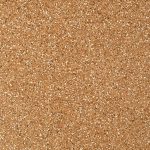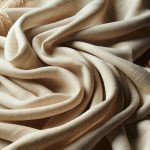Air permeability is the unsung hero of fabric comfort, capable of making or breaking your experience in any climate. You might not think much about it, but the right fabric can keep you cool in sweltering heat or warm in frigid temperatures. Understanding how air permeability affects your comfort can help you choose wisely. So, what factors should you consider when selecting fabrics for different environments?
Table of Contents
Key Takeaways
- High air permeability in fabrics enhances breathability, crucial for comfort in warm climates by regulating body temperature and reducing moisture buildup.
- Lightweight materials like cotton and linen promote airflow, making them ideal for hot weather and preventing discomfort due to heat.
- In cold climates, tightly woven fabrics lower air permeability, blocking cold air while retaining insulation and allowing moisture escape for warmth.
- High humidity environments benefit from moisture-wicking fabrics that facilitate sweat evaporation, ensuring comfort and reducing clamminess during physical activities.
- Sustainable textiles, such as organic cotton and bamboo, combine breathability with eco-friendliness, making them suitable for various climates without compromising comfort.
Understanding Air Permeability and Its Importance
When you think about fabric comfort, air permeability often plays an essential role in how a material feels against your skin. It’s the ability of a fabric to allow air to flow through it, which greatly impacts breathability.
When a fabric breathes well, it helps regulate your body temperature, keeping you cool and comfortable, especially during physical activities. High air permeability means less moisture buildup, reducing discomfort and odors.
Breathable fabrics regulate body temperature, keeping you cool and comfortable while minimizing moisture buildup and odors.
Fabrics like cotton and linen excel in this regard, making them ideal for hot climates. Understanding air permeability can help you choose the right materials for your wardrobe, ensuring you enjoy a comfortable experience whether you’re lounging at home or out and about.
Prioritize breathable fabrics, and you’ll feel the difference.
Fabric Requirements for Warm Weather Clothing
Choosing the right fabrics for warm weather clothing is key to staying comfortable in the heat. Look for lightweight materials that allow air to flow freely, like cotton, linen, or moisture-wicking synthetics. These fabrics not only breathe well but also help regulate your body temperature.
Opt for loose-fitting designs, as they promote airflow and reduce clinginess. Fabrics with light colors reflect sunlight, keeping you cooler than darker shades. Additionally, consider blends that combine breathability with durability.
Avoid heavy or thick materials that trap heat and moisture, making you feel sticky and uncomfortable. By selecting the right fabrics, you can enhance your comfort and enjoy your outdoor activities in warm weather without overheating.
Selecting Fabrics for Cold Weather Performance
While it might seem counterintuitive, selecting the right fabrics for cold weather is crucial to staying warm and comfortable. You’ll want to focus on materials that provide insulation and moisture management.
Fabrics like wool and fleece trap heat effectively while allowing moisture to escape, keeping you dry. Look for options with a tighter weave, as they reduce air permeability, preventing cold air from penetrating.
Layering is also essential; consider a moisture-wicking base layer, an insulating mid-layer, and a windproof outer layer.
Avoid cotton, as it retains moisture and loses insulation properties when wet. By choosing the right fabrics, you can enjoy outdoor activities without sacrificing comfort, no matter how chilly it gets outside.
Stay warm and stylish this winter!
The Impact of Humidity on Fabric Choices
Humidity greatly affects your fabric choices, as it influences how materials perform in varying conditions.
In high humidity, you’ll want fabrics that wick moisture away from your skin, like cotton or moisture-wicking synthetic blends. These materials help you stay dry and comfortable by allowing sweat to evaporate.
Conversely, in drier climates, you might opt for heavier fabrics like wool, which can provide insulation without causing overheating.
When selecting garments, reflect on breathability and air permeability; these qualities are vital for comfort.
You’ll also want to take into account the fabric’s weight and texture, as they can impact your overall comfort level.
Ultimately, understanding how humidity affects fabric performance will help you make better choices for your wardrobe.
Innovations in Sustainable and Breathable Textiles
As the demand for eco-friendly fashion rises, innovations in sustainable and breathable textiles are transforming how you reflect on comfort and environmental impact.
You can now enjoy stylish options that prioritize both your comfort and the planet. Here are some exciting advancements to contemplate:
- Recycled Fibers: Fabrics made from post-consumer plastics reduce waste and maintain breathability.
- Organic Cotton: Grown without harmful pesticides, it offers soft comfort and better air permeability.
- Bamboo Fabric: Naturally moisture-wicking and breathable, it’s a sustainable alternative to traditional textiles.
- Tencel™ Lyocell: Produced from sustainable wood sources, it’s biodegradable and promotes airflow.
These innovations allow you to make conscious choices without sacrificing style or comfort, fostering a more sustainable fashion future.
Frequently Asked Questions
How Do Different Fabric Weaves Affect Air Permeability?
Imagine wearing a sweater that feels like a sauna. Different fabric weaves create varying levels of air permeability, impacting breathability. Looser weaves allow more airflow, while tighter weaves trap heat, affecting your comfort considerably.
What Are the Best Fabrics for Exercise in Hot Weather?
For exercise in hot weather, choose lightweight, moisture-wicking fabrics like polyester or nylon. They dry quickly, keep you cool, and allow better airflow, ensuring you stay comfortable while you work up a sweat.
Can Air Permeability Be Improved After Fabric Production?
You can certainly give fabrics a new lease on life post-production! Techniques like laser cutting or chemical treatments can enhance their air permeability, making them more comfortable and functional for your needs in various environments.
How Does Air Permeability Influence Fabric Durability?
Air permeability affects fabric durability by allowing moisture and heat to escape, reducing stress on fibers. When fabrics breathe, they tend to resist wear and tear, ensuring they last longer and maintain their quality over time.
What Role Do Finishes Play in Air Permeability of Fabrics?
Finishes greatly impact air permeability by altering fabric structure. They can either enhance airflow, making fabrics more breathable, or restrict it, affecting comfort. You should consider the finish when selecting fabrics for specific applications.







